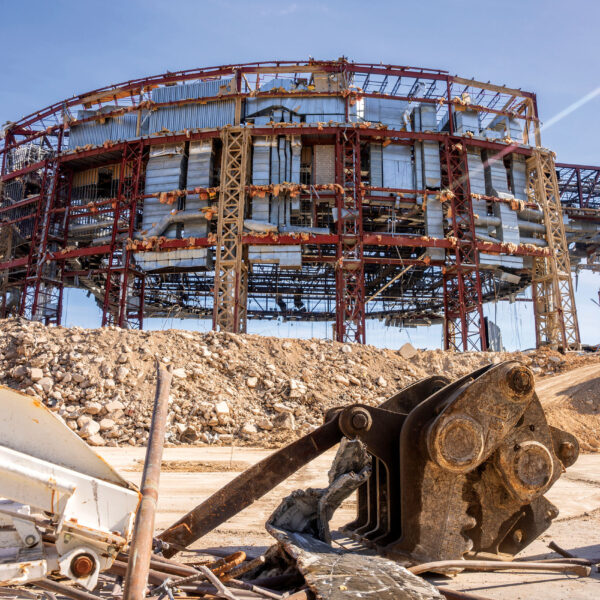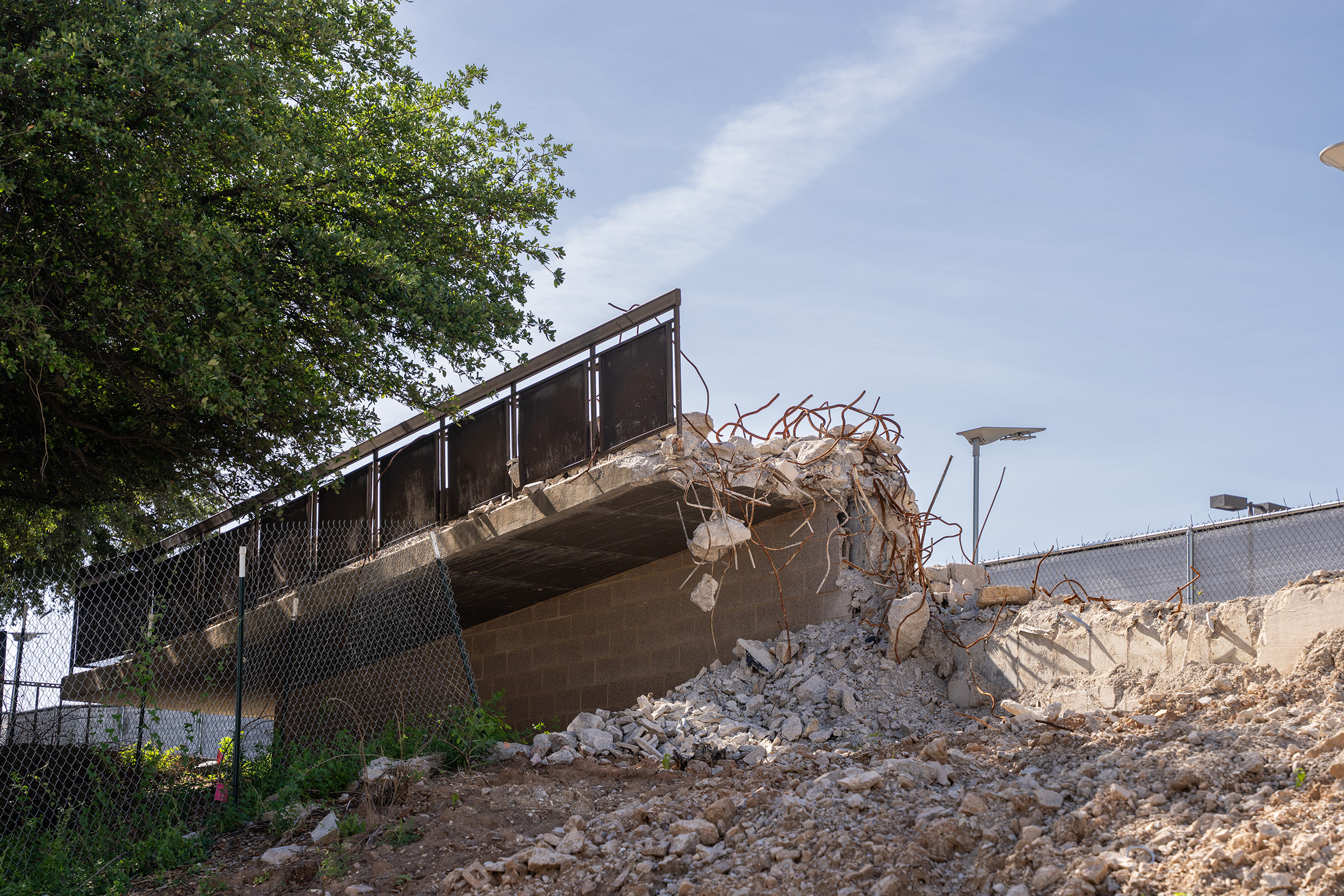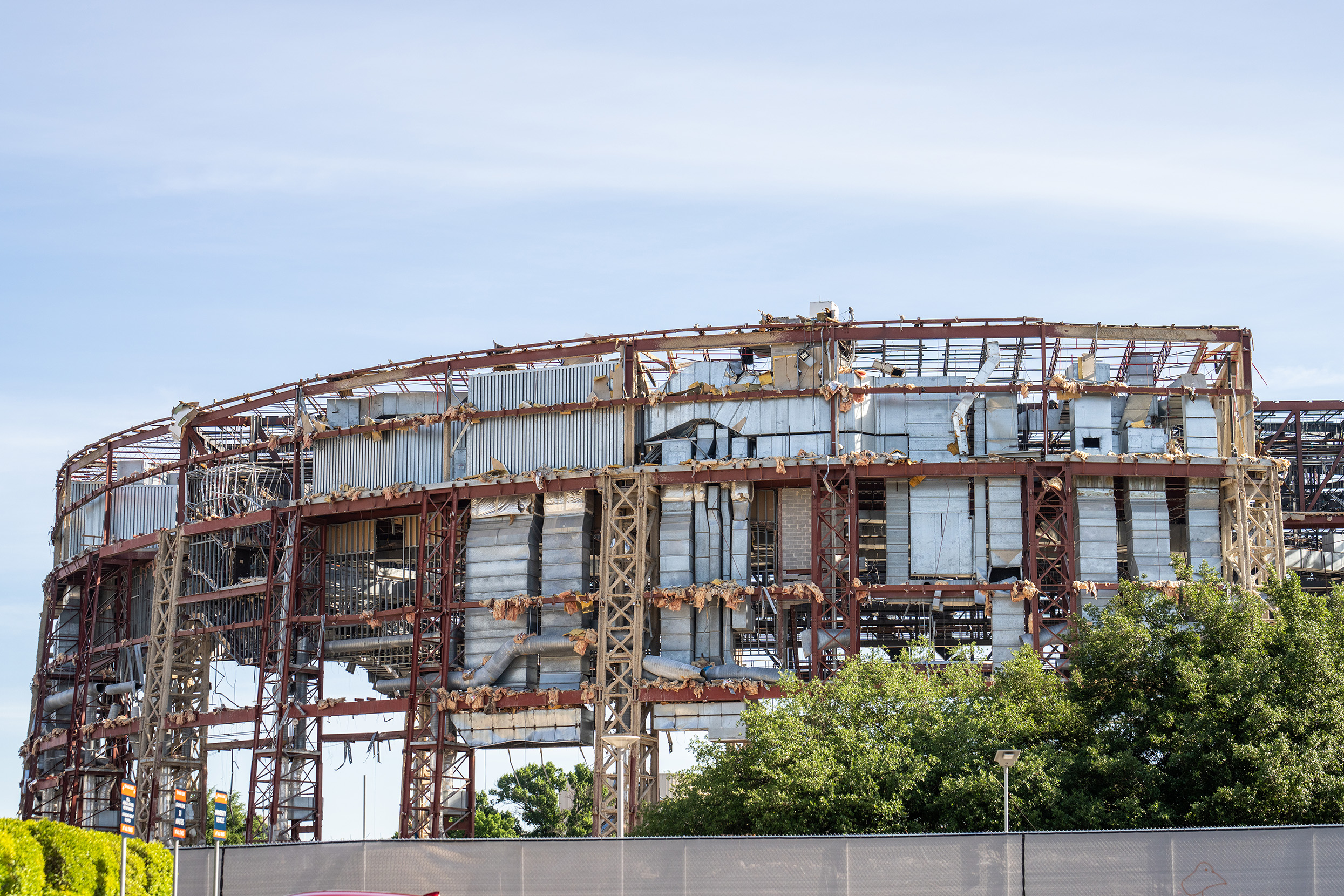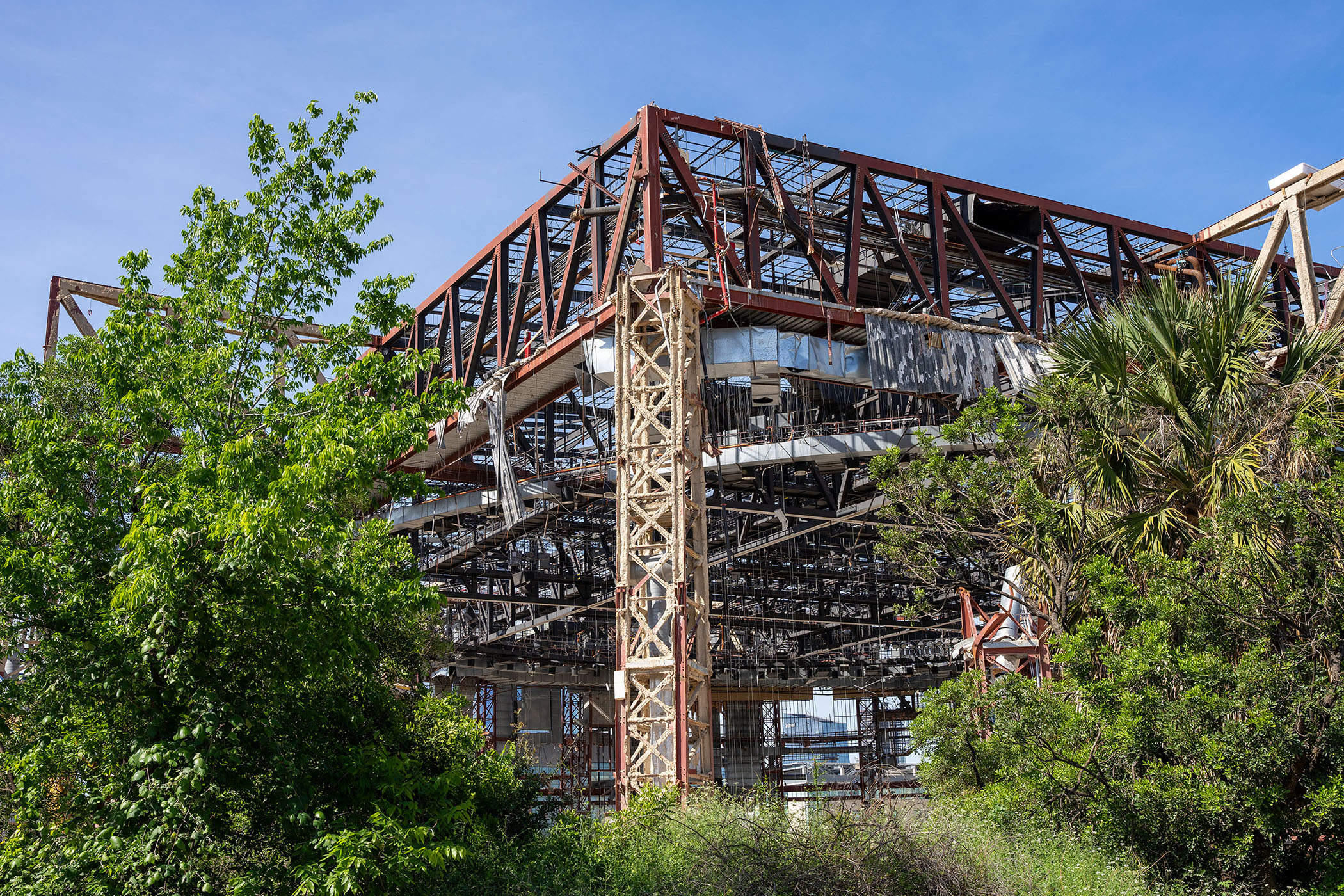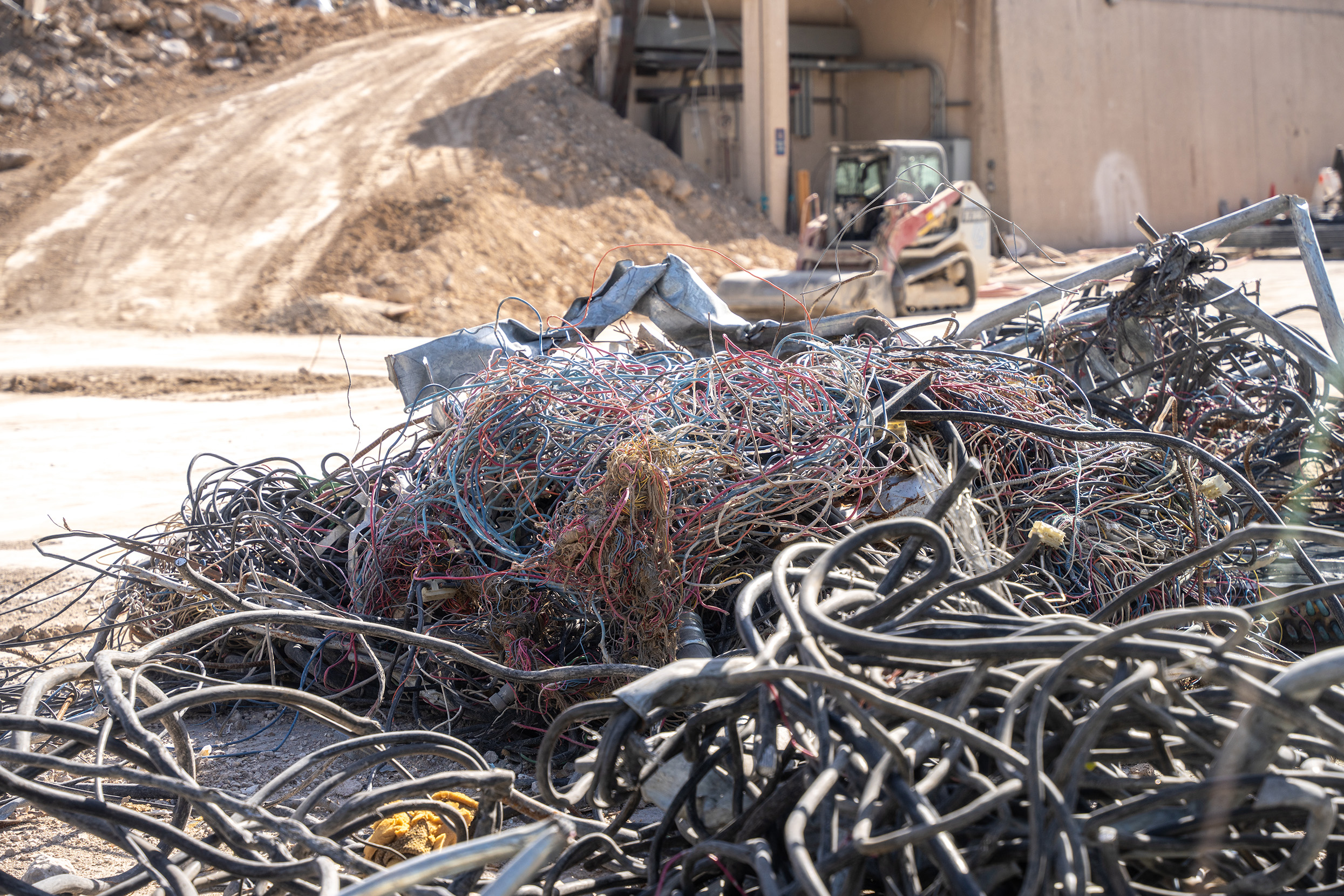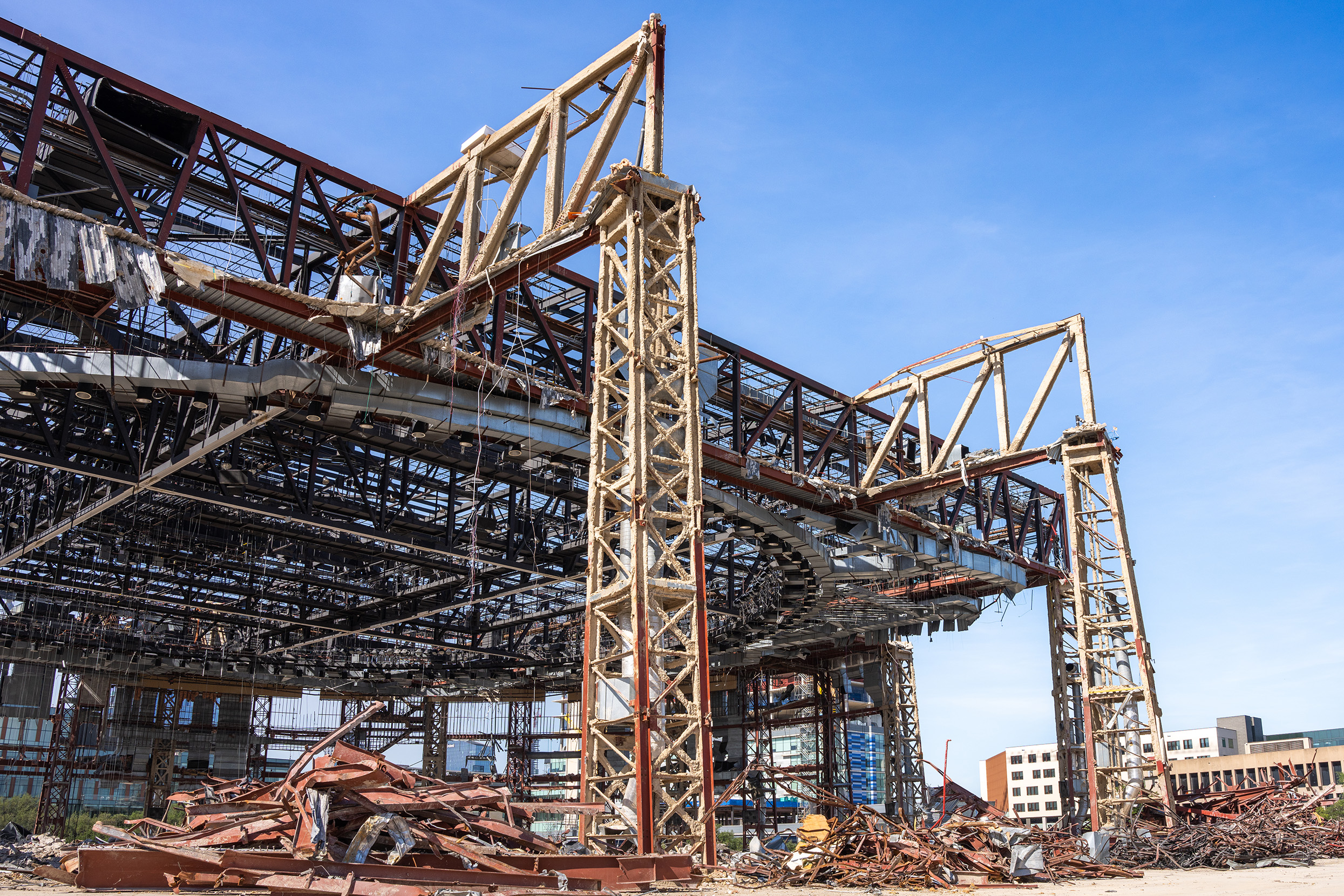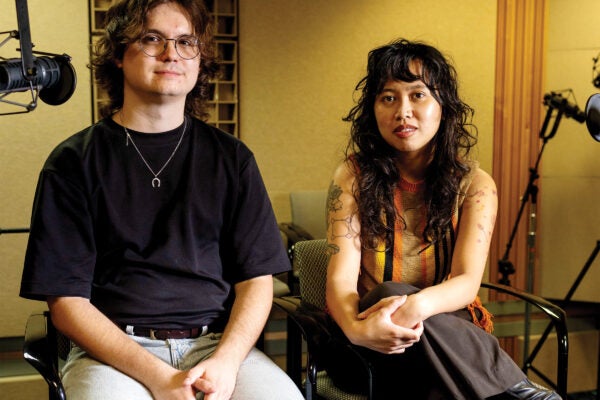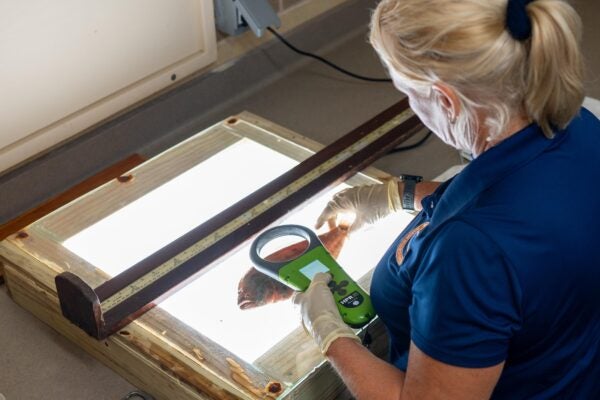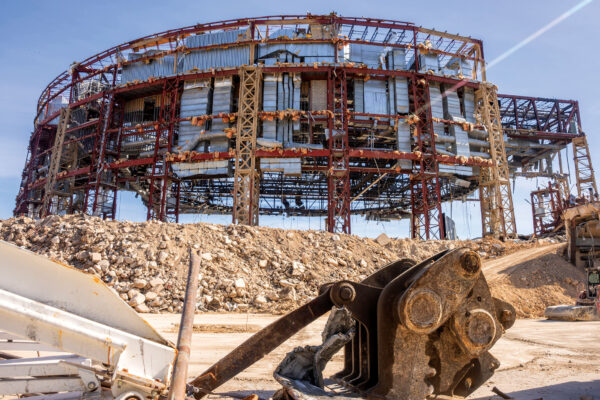The roof is gone, and the walls have been stripped away. The 12 primary support columns hold the last of the building together, resembling a rib cage on a carcass. Pieces of metal and concrete are scattered around, and remnants of insulation flap in the breeze as excavators cruise through the rubble.
On this day in mid-April, the Frank Erwin Center is a far cry from its former glory as an entertainment arena. Nicknamed “the Drum” for its round appearance, what was once the home of UT basketball, concerts and other major events has, essentially, stopped beating.
Demolition of the Erwin Center began last fall to make way for a new medical center that is a partnership between UT Austin and MD Anderson Cancer Center. The University teamed with contractor SpawGlass on the $25 million project, which is setting an example for future demolition projects with the help of assistant professor Christopher Rausch.
By reintroducing materials and bringing them back into the circular supply chain, construction can start to be more environmentally conscious.
Rausch, of the Fariborz Maseeh Department of Civil, Architectural and Environmental Engineering, is studying opportunities to salvage materials from the Erwin Center demolition for recycling and reuse.
“By reintroducing salvaged materials and bringing them back into the circular supply chain, construction can start to be more environmentally conscious,” Rausch says. “We don’t have to fundamentally change how we produce things. By sourcing and recovering materials, we begin to have a more sustainable future where we don’t have to choose to focus on either resource conservation or increasing output.”
Before demolition began, the Erwin Center’s memorabilia and furniture were relocated and given new homes in athletics facilities around campus, and anything that wasn’t used was sent to the Surplus REuse Store on the J.J. Pickle Research Campus. Throughout the process, workers have sorted the debris for recycling.
“The materials will largely go back into the same thing that it was before,” says Dan Cook, the executive director of planning, design and construction at UT. “Steel will get melted down and turned back into steel that could be used for rebar. The concrete is broken up from big rocks into little rocks, and then it becomes part of the aggregate that’s used to make more concrete in the future.”
Rausch’s research focuses on finding even more opportunities for sustainability, looking beyond the steel and concrete at every element of the building to see what else could be salvaged: locks, transformers, fire alarm panels and much more. It assesses the value of recovering materials, whether they can be resold or reused elsewhere, or even if they can be more efficiently recycled. Each decision comes down to assessing key tradeoffs such as the cost to recover the materials, the potential resale value, and the environmental benefits of avoiding the landfill.
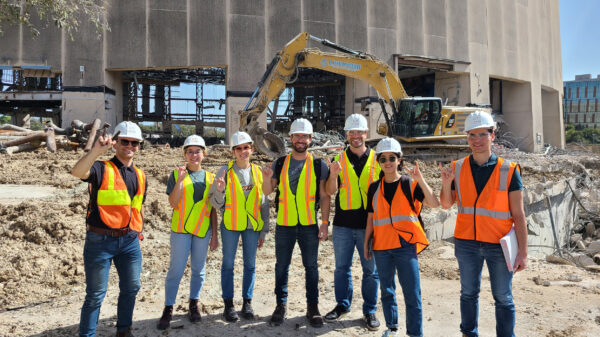
Rausch first got involved with the project through Jim Walker, director of sustainability at UT, who led him to the Office of Sustainability’s Green Fund program to secure a grant. With a team of students, he used 3D scanning to collect millions of data points from the site for analysis.
“Every single time I was on-site, I was amazed by how much effort was made towards reducing landfill waste,” Rausch says. “This project was very unique just in terms of its sheer scale. With the Erwin Center, you have such a large quantity of materials that you can explore unique waste diversion opportunities.”
The methodical demolition started from the roof, bringing materials down the middle of the building.
“When we proposed it, our method was to deconstruct the building, as opposed to demolish the building,” says project manager Parker Blaschke, who is with SpawGlass. “We’ve been able to minimize the impact to campus buildings.”
The location of the Frank Erwin Center, surrounded by Dell Medical School buildings and Interstate 35, didn’t allow for a conventional implosion. The selective demolition process also benefited Rausch’s research because it gave a snapshot into a scenario where even more reuse could have been achieved.
“The way they brought the structure down almost mimics, in some ways, the effort that would be required if you were to carefully recover those materials,” Rausch says. “When those panels came down, they were bringing them down a lot more carefully than just imploding the building. We could actually start to see and quantify the additional effort in terms of cost and emissions that would be required if those materials were in fact recovered for reuse. You get much more meaningful data rather than having to make these broad assumptions.”
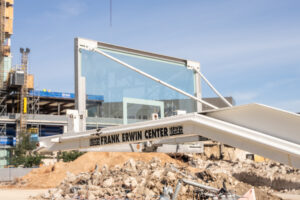
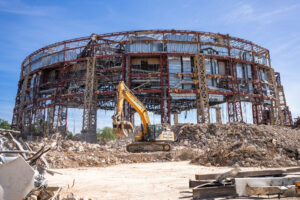
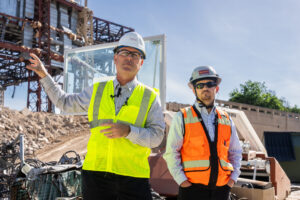
The final pieces of the structure were toppled in late May, and crews continued work on removing support piers sunk into the ground and grading the earth to prepare for new construction. Meanwhile, Rausch is analyzing the data to apply to future projects.
“We’re distilling everything that we’ve seen,” Rausch says. “What we’re focusing on now over the next couple of months is putting everything we’ve learned and seen into a robust set of policy guidelines for UT and beyond.”
Rausch hopes the research can help create policy recommendations that UT can implement and give ideas to the city of Austin. The next large building in Austin that is slated for removal is the Austin Convention Center, and Rausch hopes part of this work can help inform the planning of that demolition.
“This is the first of many potential future steps,” Rausch says. “Construction is needed by society. Society is built on construction in many ways, but construction leads to a lot of environmental impacts. It leads to escalating CO2 emissions. If we’re not looking upstream and trying to find better ways of sourcing products, we are only going to be escalating existing problems.”
